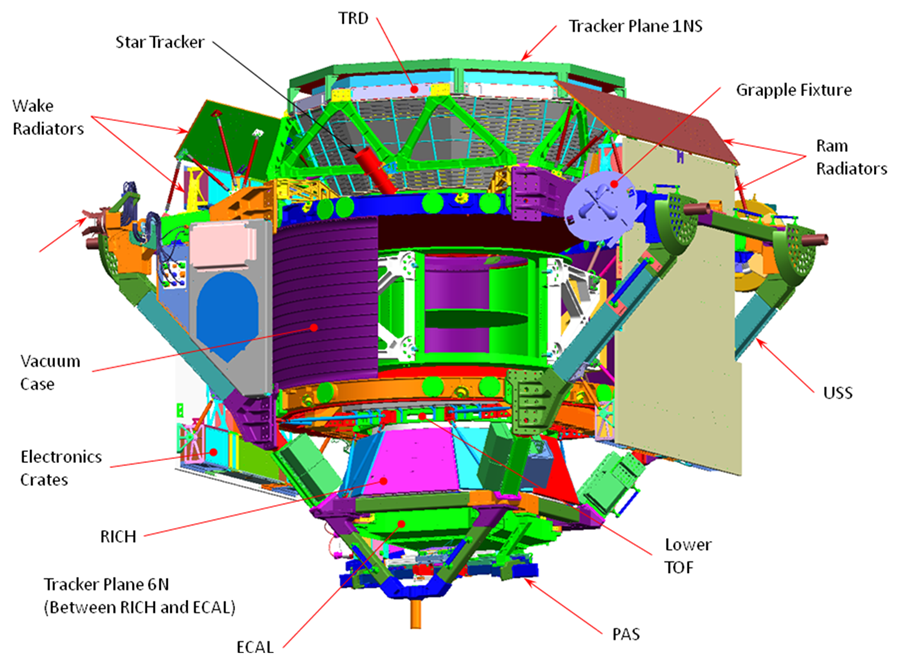New light on dark matter: space station magnet attracts praise


Nobel prizewinner Samuel Ting, early Thursday morning (March 4, 2:00 AEDT), announced the first results from the Alpha Magnetic Spectrometer (AMS) search for dark matter. The findings, published in Physical Review Letters, provide the most compelling direct evidence to date for the existence of this mysterious matter.
In short, the AMS results have shown an excess of antimatter particles within a certain energy range. The measurements represent 18 months of data from the US$1.5 billion instrument.
The AMS experiment is a collaboration of 56 institutions, across 16 countries, run by the European Organisation for Nuclear Research (CERN). The AMS is a giant magnet and cosmic-ray detector complex fixed to the outside of the International Space Station (ISS).
Dark matter matters
The visible matter in the universe, such as you, me, the stars and planets, adds up to less than 5% of the universe. The other 95% is dark, either dark matter or dark energy. Dark matter can be observed indirectly through its interaction with visible matter but has yet to be directly detected.
Cosmic rays are charged high-energy particles that permeate space. The AMS is designed to study them before they have a chance to interact with Earth’s atmosphere.

An excess of antimatter within the cosmic rays has been observed in two recent experiments – and these were labelled as “tantalising hints
Orrman-Rossiter K (2013-04-10 00:02:01). New light on dark matter: space station magnet attracts praise. Australian Science. Retrieved: Apr 20, 2024, from http://australianscience.com.au/physics/new-light-on-dark-matter-space-station-magnet-attracts-praise/
 Follow
Follow
1 thought on “New light on dark matter: space station magnet attracts praise”
Comments are closed.